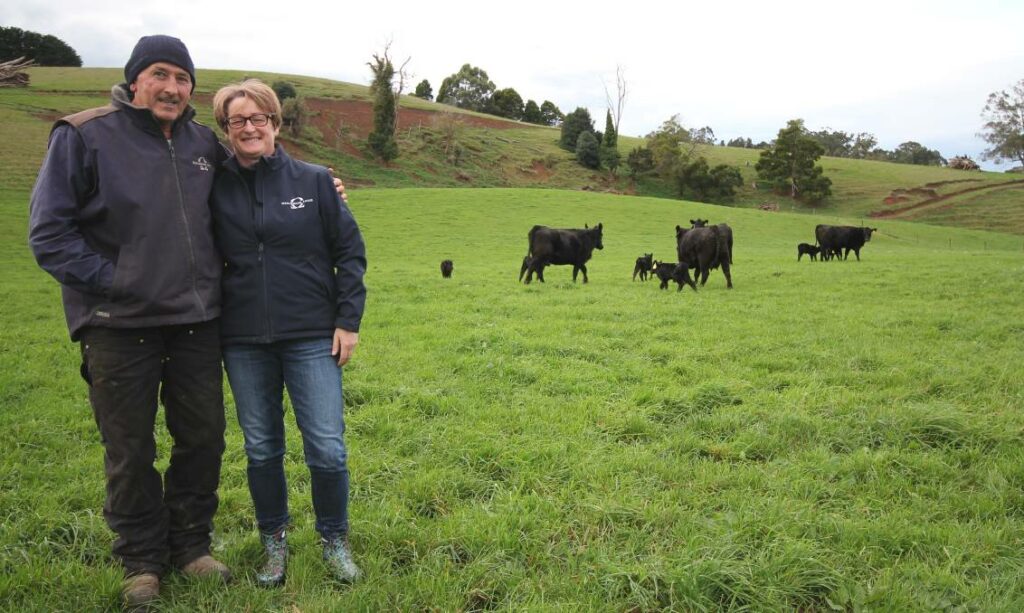This article first appeared in Stock & Land By Holly McGuinness
Doubling up on their Angus calves with ease, Merlewood Angus stud principals Daniel and Anne Marie Barrow, Mirboo North had been surprised with four sets of twins this year over just one week.
Their first set of twins this year was born on July 17 out of a heifer joined to a Boonaroo Keystone bull, the second was from a Banquet Quirky bull, with the remainder bred from AI sires.
It’s the second year in a row they’ve had a twin pattern in their herd, with 10 sets of twins born in 2022, which they said was an exceptional year and a good spring, but this year neighbouring properties also reported unusually high concentration of twins.
“You start looking at genetics, and if is there any correlation, but there was no correlation to anything,” Mr Barrow said.
“So, it wasn’t just us, even other neighbours were talking about increased triplets in their sheep.
“But we all do slightly different programs, and we start calving in early winter.”
With no connection between bull genetics, the couple can’t quite figure out what’s giving them so many twins, but said plenty of people had their opinions to guess at an explanation, but they think it could just be luck after a few good seasons.
“There’s an old wives tale that on the back of something like a drought and when Mother Nature has kind of had her numbers die, then she produces more to put them back up, but it’s all just people speculating really and just grasping at straws,” Ms Barrow said.
For their stud, having so many twins had been more of a hindrance than a help, as Ms Barrow said many people think it’s great to have two cows for the price of one, but since they focus on high quality growth rates the twins don’t grow at the same pace as a singularly born calf, among other issues.
“Our male’s have to perform at a really young age and they have to hit really quite high growth rates to make it into our program to get sold,” Ms Barrow said.
“[Then the females] have to be 350 kilos by the time they’re a year to be joined, and if a Mum is just raising one animal, she can do that quite easily, but when she’s raising two, you end up with two that are maybe 100 kilos behind.”
Twins that are same-sex are usually slower to grow and smaller, but if they’re mixed sex, they’re what’s called a Freemartin, which often means the female is not reproductive and the male can have reduced fertility.
“[The female twin] would be developed enough that she comes into heat and cycles but not enough to get in calf and to be in a program, so you’re left with a by product,” Mr Barrow said.
“We draft out the twins as they’re born, so we’ll take them out of the herds to give the mother a chance to be on decent feed, and she will raise the calves but they’ll both be quite behind on making their weights.
